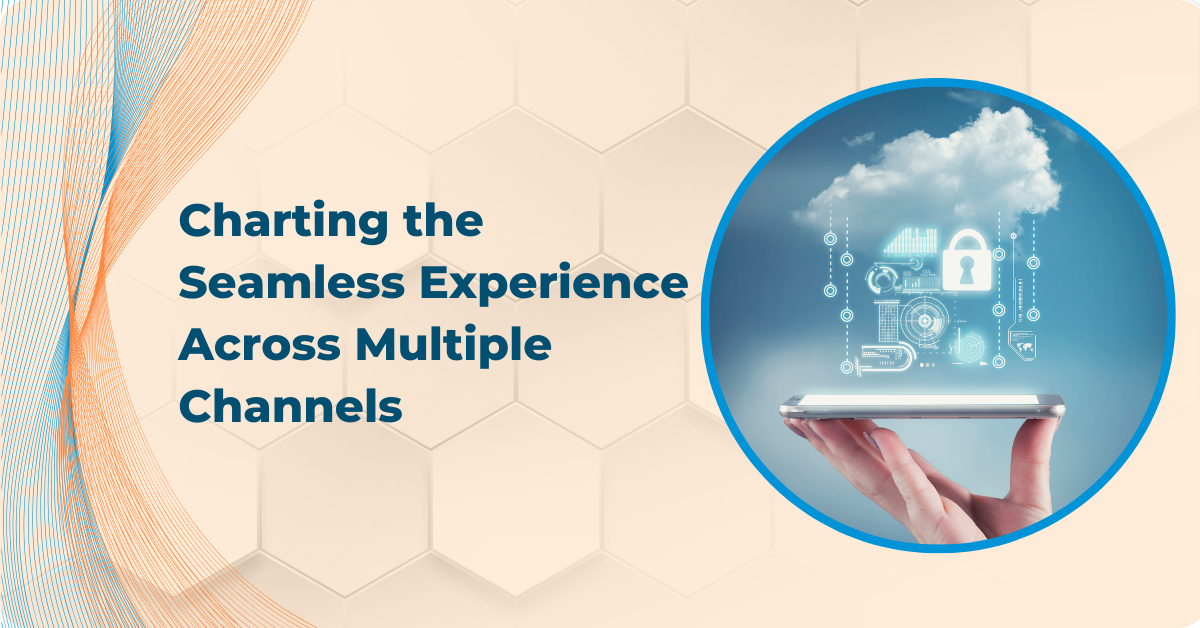Charting the Seamless Experience Across Multiple Channels
Pointwest
April 24, 2024
“By 2026, 60% of large enterprises will use total experience to transform their business models to achieve world-class customer and employee advocacy levels”
Source: Gartner Top Strategic Technology Trends for 2022

Creating a cohesive total experience strategy is crucial for businesses today to effectively engage with their customers, employees, and partners to deliver a seamless and personalized experience across all touchpoints. This strategy is important for consumers as it enhances their overall satisfaction and loyalty, for employees as it streamlines their workflow and productivity, and for business partners as it fosters collaboration and innovation.
For example, a customer may be exploring products on a provider’s website, view review videos on a streaming app on their smart television, switch to their smartphone while on the go, and then have a question. A customer representative can step in and answer important questions without the need to re-encode all the information previously provided by the customer. The rep may assist in completing a transaction or point out the customer’s eligibility for a rewards program that will provide an additional discount. This rep may also let the customer complete the transaction while staying on the line for support, then later assisting in renewing the customer’s expiring rewards loyalty card.
What is the modern digital core of a seamless experience?
1. Data Synchronization
The vast expanse of digital interactions generates an ocean of data, which, when mined effectively, can lead to unparalleled customer experiences. Data synchronization is the cornerstone that ensures all aspects of a company’s operations are harmonized, offering a unified view of the customer across various touchpoints. This holistic understanding is vital for industries such as banking and retail, where real-time data access can significantly enhance decision-making and customer engagement.
In finance, for instance, a customer engaging with a mobile banking app expects real-time updates on transactions and account balances. When data is immediately synchronized and available across channels, this immediate insight becomes possible, fostering trust and satisfaction. Similarly, in retail, inventory management synced with online and in-store systems ensures customers have access to product availability, which is critical for a frictionless shopping experience. Achieving this level of data harmony requires robust technology that can seamlessly integrate disparate systems and data silos, enabling a cohesive CX that customers have come to expect.
2. Unlocking Customer Insights with Advanced Analytics
Harnessing the power of advanced analytics goes beyond mere data collection and ventures into the extraction of actionable intelligence. These insights pave the way for personalized customer interactions and predictive models that can shape future strategies.
In the insurance industry, the application of advanced analytics can revolutionize how customer risk is assessed and policies are priced. By analyzing vast datasets, insurers can identify patterns and behaviors that lead to more accurate risk profiles and tailor suitable offerings to their customers. Furthermore, retail giants utilize analytics to anticipate consumer trends and preferences, enabling them to stock products aligned with upcoming demands. This level of foresight is achieved through the meticulous analysis of customer data, leading to experiences that anticipate customer desires. By implementing advanced analytics, businesses can transform raw data into a strategic asset, creating a competitive edge that allows them to meet their customers’ needs proactively.
3. Mastering the Art of Simplification
The complexity of processes and systems can often be a deterrent to providing a smooth customer journey. Simplifying these complex tasks can dramatically improve the customer’s interaction with a business.
In the bustling world of finance, where customers engage with numerous products and services, simplifying the process of applying for a loan or setting up a new account can be a game-changer. Taking a complex process and distilling it into a few user-friendly steps demonstrates respect for the customer’s time and leads to higher satisfaction and loyalty. Likewise, in healthcare, the maze of appointment scheduling, medical records, and billing can be intimidating. By streamlining these interactions through user-friendly digital interfaces, patients can navigate their healthcare journey with greater ease. This approach not only improves the individual patient experience but also enhances the overall perception of the healthcare provider. Through the art of simplification, businesses remove barriers, creating a pathway for smoother and more enjoyable customer experiences.
4. Embracing a Cloud-First Strategy
Adopting a cloud-first approach is more than a technological shift; it’s a strategic advantage that fosters agility, scalability, and innovation. The cloud serves as a catalyst for businesses to rapidly deploy services that cater to a dynamic customer base. In sectors like logistics, where real-time data and global reach are paramount, cloud computing enables the seamless tracking of shipments and inventory, which is vital for customer reassurance and operational efficiency. Airlines leverage cloud platforms to manage the colossal data generated by flight operations, passenger information, and service requests. This integration allows for more responsive customer service and agile adaptation to changing travel conditions. The cloud-first paradigm ensures that businesses stay resilient in the face of fluctuating demands, keeping them one step ahead in delivering experiences that resonate with customers. By embracing the cloud, companies open up a world of possibilities to enhance the CX while driving cost efficiencies and supporting growth.
5. Orchestrating Integration via API-Driven Ecosystems
API (Application Programming Interface) integration is a pivotal tool in crafting a digital ecosystem that operates with fluidity and cohesion. APIs act as the connective tissue, allowing different software systems to communicate and share functionalities. In the financial sector, APIs enable the burgeoning trend of open banking, where consumers can manage their finances across multiple platforms seamlessly. This interoperability is crucial for creating a customer-centric banking environment that empowers users with control and visibility.In the retail space, APIs facilitate the convergence of online and offline channels, offering a consistent shopping experience whether the customer is in-store or online. This uniformity is achieved by integrating inventory systems, customer relationship management (CRM) software, and e-commerce platforms, ensuring that customers receive the same level of service regardless of how they interact with the brand. By leveraging API-driven ecosystems, businesses can construct a digital infrastructure that is not only robust and secure but also adaptable to the ever-evolving needs of customers.
Make your Seamless Experience Happen
Customer experience plays a critical role as organizations move further into their digital business transformation. The five foundational enablers—data synchronization, advanced analytics, the simplification of customer tasks, cloud-first strategies, and API integration—are instrumental in charting a course toward a seamless customer journey.
Reach out to us to learn more about how Pointwest can help you chart your course toward a future where the integration of these foundational digital components fosters an environment of innovation, efficiency, and customer-centricity. Pointwest has been partnering with some of the world’s largest and most recognized companies to bridge the gap between today’s challenges and tomorrow’s promises through practical, tailored solutions that deliver transformation at the speed of digital.


